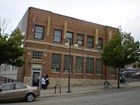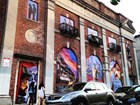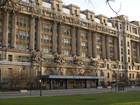The LGBTQ Theme Study is a publication of the National Park Foundation for the National Park Service and funded by the Gill Foundation. Each chapter is written and peer-reviewed by experts in LGBTQ Studies.
-
Article 1: Prologue: Why LGBTQ Historic Sites Matter
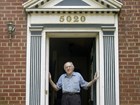
We, lesbian, gay, bisexual, transgender, queer people (LGBTQ), all the subdivisions of the sexual and gender minority community, exist in America. The places we remember and hold dear, those places that have become part of our identity, also exist. Still. Many of them. Read more
-
Article 2: Introduction to the LGBTQ Heritage Initiative Theme Study

The National Park Service (NPS) is committed to telling the stories and histories of all Americans. The Lesbian, Gay, Bisexual, Transgender, and Queer (LGBTQ) Heritage Initiative is part of this commitment. This theme study, a core component of the initiative, is a starting point for telling LGBTQ histories in the NPS, not the end of the process. Read more
-
Article 3: Introduction to Lesbian, Gay, Bisexual, Transgender, and Queer (LGBTQ) History in the United States
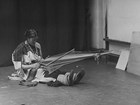
LGBTQ history is an umbrella term that captures the stories of strength and struggle of diverse individuals, cultures, and communities that have been considered nonnormative. It is the story of movements for justice; of moments of triumph and tragedy that people we now understand as LGBTQ have faced—and often continue to face—in our daily lives and demands for the right to live, love, and thrive. Read more
-
Article 4: The History of Queer History: One Hundred Years of the Search for a Shared Heritage
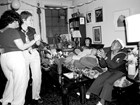
Searching for the history of lesbian, gay, bisexual, and transgender history may seem a particularly queer conceit—and searching for meaningful places associated with efforts to document, preserve, interpret, and share that history may seem queerer still. After all, every individual has a past, so at first glance it may appear that every social group must have a shared heritage. Read more
-
Article 5: The Preservation of LGBTQ Heritage
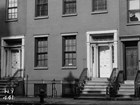
The LGBTQ Theme Study released by the National Park Service in October 2016 is the fruit of three decades of effort by activists and their allies to make historic preservation a more equitable and inclusive sphere of activity. Read more
-
Article 6: LGBTQ Archeological Context
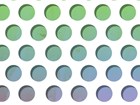
The National Register of Historic Places (NRHP) and National Historic Landmarks (NHL) programs are place-based and to be included in them, the places (buildings, structures, landscapes, and archeological sites) must still exist. This is a challenge when looking at the history and heritage of historically marginalized populations, who are often located at the edges of society. Read more
-
Article 7: A Note about Intersectionality
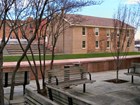
Intersectionality is the recognition that categories of difference (sometimes also referred to as axes of identity) including—but not limited to—race, ethnicity, gender, religion/creed, generation, geographic location, sexuality, age, ability/disability, and class intersect to shape the experiences of individuals; that identity is multidimensional. These identities are not mutually exclusive but interdependent. Read more
-
Article 8: Making Bisexuals Visible
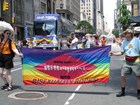
Everyone is not either gay or straight. This mistaken assumption lies behind most ordinary daily conversations about who and how people create their families, identities, and love lives, but it is often not the whole truth. Bisexual people’s experiences are hidden in plain view, perhaps not visible, sometimes revealed. Read more
-
Article 9: Sexual and Gender Diversity in Native America and the Pacific Islands

This chapter provides an introduction to the significant diversity in gender roles, sexualities, and identities among the native peoples of the United States—American Indians, Alaskan Natives, and native Hawaiians. Following an overview of the varying characteristics, roles, and meanings attributed to sexual and gender diversity in native traditions, the lives of four historical two spirits who played notable roles in American history are explored. Read more
-
Article 10: Transgender History in the US and the Places that Matter
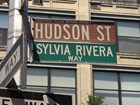
The word “transgender” first appeared in print in American English in 1965, and entered widespread use only in the 1990s. Thus, it might seem to name a relatively recent phenomenon without much of a history—one that has had scant time to leave many traces in the built environment or inhabited landscape. Read more
-
Article 11: Breathing Fire: Remembering Asian Pacific American Activism in Queer History
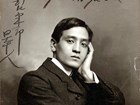
On July 1, 2015 the Respect After Death Act (California Assembly Bill 1577) took effect in California enabling transgender people to record their chosen gender on their death certificates. At least three Asian queers stood at the center of the passage of this bill. When Chinese and Polish American Christopher Lee who identified as a transgender man killed himself in 2012, the coroner listed him as female on his death certificate. Read more
-
Article 12: Latina/o Gender and Sexuality
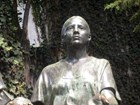
Gender and sexuality among US Latina/o populations encompass a continuum of experiences, historical, cultural, religious, and lived. Gender and sexuality varied by culture or ethnicity and by era across the many different Latino populations descended from Latin Americans. Latino national histories, born inside the thirty-three different Latin American countries in existence today, are united in one irrefutable link to the conquest, by Spain. Read more
-
Article 13: "Where We Could Be Ourselves": African American LGBTQ Historic Places and Why They Matter
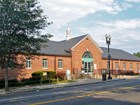
My first forays into African American LGBTQ history were purely for self-edification. As an out African American man, I sought out whatever information I could find, from novels, to anthologies, to biographies, to documentaries. In many ways, I was looking for a sense of community, and a sense of belonging as an LGBTQ African American through the information I sought. Read more
-
Article 14: LGBTQ Spaces and Places
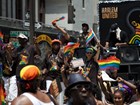
As LGBTQ people have been invisibilized, criminalized, and outcast, they have created ways to respond specific to their geographies. Like the injustices they have suffered, their tactics of resilience and resistance and their spaces and places are similar to but unique from other marginalized groups. Read more
-
Article 15: Making Community: The Places and Spaces of LGBTQ Collective Identity Formation
In the summer of 2012, posters reading "MORE GRINDR=FEWER GAY BARS” appeared taped to signposts in numerous gay neighborhoods in North America—from Greenwich Village in New York City to Davie Village in Vancouver, Canada. Read more
-
Article 16: LGBTQ Business and Commerce
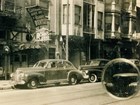
As the field of gay and lesbian studies first began to take shape in the 1980s, writer and activist Dennis Altman called attention to the central role that commercial enterprises played in the development of LGBTQ communities. “One of the ironies of American capitalism,” he observed, “is that it has been a major force in creating and maintaining a sense of identity among homosexuals.” Read more
-
Article 17: Sex, Love, and Relationships

Parks. Bathhouses. Bars. Piers. Private homes. The YMCA. Tearooms. Hotels. Motels. Teepees. Igloos. Bungalows. Softball fields. Department stores. Campgrounds. Picket lines. Lover’s lanes. Forest preserves. Prisons. Tattoo parlors. Brothels. Barracks. Music festivals. Personal ads. Websites. Gyms. Smartphones. Street corners. These are some of the places where LGBTQ people have found each other. Read more
-
Article 18: LGBTQ Civil Rights in America
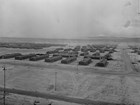
The stories of LGBTQ America are, in large part, stories of civil rights—rights denied, fought for, fought against, won, lost, won again, and threatened. Broadly, civil rights are understood as freedoms of life, safety, thought and conscience, speech, expression, the press, assembly, and movement as well as the right to privacy and protection from discrimination. Read more
-
Article 19: Historical Landmarks and Landscapes of LGBTQ Law

The American historical landscape is filled with sites where people who engaged in same-sex sex and transgressed gender binaries struggled to survive and thrive. In these locations, “sinners,” “deviants,” and “perverts” often viewed law as oppressive. Immigrants, poor people, and people of color who violated sex and gender norms had multiple reasons for seeing law as implicated in the construction and reconstruction of social hierarchies. Read more
-
Article 20: LGBTQ Military Service

Eric Alva was raised in a military family in San Antonio, Texas. His grandfather had served in the army in World War II and Korea. His father served in Vietnam. When Alva graduated from high school in 1989, he joined the Marine Corps. He was deployed in Somalia in the 1990s and rose gradually through the enlisted ranks to become a staff sergeant. Read more
-
Article 21: Struggles in Body and Spirit: Religion and LGBTQ People in US History
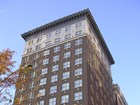
The Reverend Dr. Martin Luther King, Jr. once observed that eleven o’clock on Sunday morning is the most segregated hour in the United States. But segregation goes beyond a separation between black churches and white churches. There is a tremendous variety of religious communities in the US - Hindus, Muslims, Jews, Christians, Buddhists, Pagans, and others. Read more
-
Article 22: LGBTQ and Health

Debates over what constitutes health and sickness have shaped LGBTQ history, identities, community building, and political activism in the United States since at least the nineteenth century. Deployed by mainstream medicine and utilized by sexual and gender minorities, “health” has fueled, reinforced, and challenged ideals of sexuality and gender, particularly as they have intersected with perceptions of race, class, ability, morality, and citizenship. Read more
-
Article 23: LGBTQ Art and Artists
This chapter focuses on LGBTQ art and artists in the United States. Due to the scope of this essay the content is necessarily limited. These locations provide a sampling of LGBTQ contributions to broader social milieus and artistic movements. I have attempted to provide content that is representative in terms of region, diversity, and historical scope. Read more
-
Article 24: LGBTQ Sport and Leisure
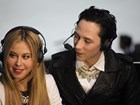
The history and ongoing engagement of lesbian, gay, bisexual, transgender, and queer (LGBTQ) Americans in sport and leisure cultures is varied and diverse, and often reflects the ebbs and flows of openness to gender and sexual diversity in mainstream culture. Read more
-
Article 25: San Francisco: Placing LGBTQ Histories in the City by the Bay
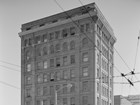
San Francisco is internationally recognized as a magnet and place of pilgrimage for LGBTQ people and a critical proving ground for advancements in queer culture, politics, and civil rights. The city has also pioneered efforts to identify, document, and preserve LGBTQ historic sites, and San Francisco was the site of foundational efforts to bring LGBTQ concerns into the preservation agenda. Read more
-
Article 26: Preservation of LGBTQ Historic & Cultural Sites - A New York City Perspective
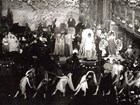
For over two decades, New York City has been in the forefront nationally in the historic preservation of LGBTQ historic and cultural sites. Beginning in the early 1990s, a number of historic preservationists, historians, and artists began documenting LGBTQ history and worked on projects to bring official commemoration and public awareness of significant LGBTQ sites. Read more
-
Article 27: Locating Miami's Queer History
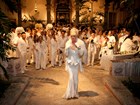
In the wee hours of a summer night in 1954, several Dade County deputies raided a handful of bars and nightspots throughout Miami and Miami Beach in what had popularly become known as their “pervert roundup.” Local law enforcement arrested nineteen “suspected perverts” that August night. Read more
-
Article 28: Queerest Little City in the World: LGBTQ Reno
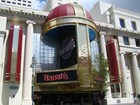
Researchers of LGBTQ history in the United States have focused predominantly on major cities such as San Francisco and New York City. This focus has led researchers to overlook a rich tradition of LGBTQ communities and individuals in small to mid-sized American cities that date from at least the late nineteenth century and throughout the twentieth century. Read more
-
Article 29: Chicago: Queer Histories at the Crossroads of America
Chicagoans live at the crossroads of America. As an urban center, the city has drawn people from all over the Midwest, the country, and the world. It is a city of many firsts in national LGBTQ history.[1] The city has a long history of people who experienced same-sex desire and gender transgression who lived—and live—all over the city, from Bronzeville to Boystown, and in neighborhoods within what grew to 234 square miles. Read more
-
Article 30: Nominating LGBTQ Places to the National Register of Historic Places and as National Historic Landmarks: An Introduction

The National Register of Historic Places (NRHP) and the National Historic Landmarks (NHL) program are two of the many ways that historic places can be identified, remembered, and preserved. Both of these programs are overseen by the National Park Service (NPS), and to be added to these lists properties (sites, buildings, structures, objects, districts) must meet certain criteria. Read more
-
Article 31: Interpreting LGBTQ Historic Sites
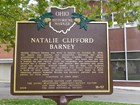
The National Park Service’s LGBTQ heritage initiative promises to raise awareness of LGBTQ history and preserve the sites related to this history. Hopefully, many of these sites will be not only designated but also interpreted to the public. In addition to these properties with their primary significance in LGBTQ history, many other historic sites, designated for primary reasons other than their LGBTQ connections, still have stories to tell on this topic. Read more
-
Article 32: Teaching LGBTQ History and Heritage
Imagine a world in which students could visit not just Civil War battlefields that raise the profound issues of slavery and what it means for states to be united, but also buildings that housed places that came to feel like home to people marginalized because of sexuality and gender, places that were important enough to defend against onslaughts by the police. Read more

